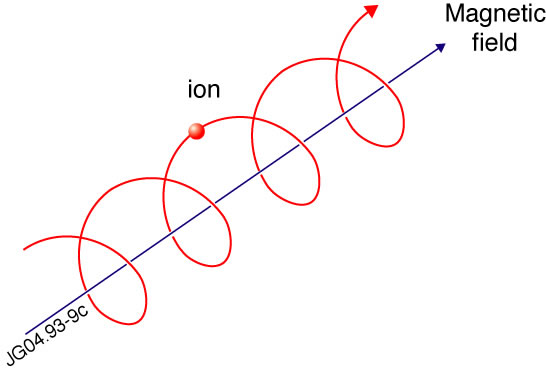My friend Leo Buizza (who is too smart to be on twitter) took a closer look at @BCG 's new net-zero emissions pledge.
Is it #greenwashing? Let's find out... 🧵
leosthreeminuteblog.home.blog/2020/09/04/so-…
Is it #greenwashing? Let's find out... 🧵
leosthreeminuteblog.home.blog/2020/09/04/so-…
For starters, credit to @BCG for making the pledge at all – it’s already more than @McKinsey and @BainAlerts have done (two of their main competitors), from what I can tell.
@BCG are talking about net-zero by 2030. That's not bad - well before the IPCC's 2050 date, and therefore in line with keeping to 1.5C of global warming.
But what about the fine print...
But what about the fine print...
Before we go on you need to understand what Scope 1, 2 & 3 emissions are. The Carbon Trust provides a handy explanation:
Scope 1: Direct emissions from owned or controlled sources (for example a factory, or if @BCG own some company cars).
carbontrust.com/resources/brie….
Scope 1: Direct emissions from owned or controlled sources (for example a factory, or if @BCG own some company cars).
carbontrust.com/resources/brie….
Scope 2: Indirect emissions from the energy use of a company. i.e. of the heating, electricity, that @BCG consume in their rented offices. (If they owned the offices it would be Scope 1).
Scope 3: All other indirect emissions caused by a business.
This can be a large umbrella, including all the flights that consulting projects are known for, or even all of the downstream use of a product (including the burning of fossil fuels extracted by a FF company!) ✈️🛢️
This can be a large umbrella, including all the flights that consulting projects are known for, or even all of the downstream use of a product (including the burning of fossil fuels extracted by a FF company!) ✈️🛢️
Anyone who knows a management consultant will know that they fly All. The. Time. - so Scope 3 is really important here.
That's why it's interesting that @McKinsey and @BainAlerts have so far only made commitments regarding their scope 1 & 2 emissions... 👎
That's why it's interesting that @McKinsey and @BainAlerts have so far only made commitments regarding their scope 1 & 2 emissions... 👎
@BCG have lovely-looking graph showing the projection of their (apparently rapidly) decreasing emissions. 

However there are 3 ways in which this is misleading...
1) What is up with the x-axis?? It moves from 2018-2019, then suddenly jumps to 2025, then 2030 🧐
This has the effect of making the red line of emissions dive sharply, when really it's a slower decline out to 2030. 📉
1) What is up with the x-axis?? It moves from 2018-2019, then suddenly jumps to 2025, then 2030 🧐
This has the effect of making the red line of emissions dive sharply, when really it's a slower decline out to 2030. 📉
2) The y-axis is also misleading - we would expect actual tons of CO2, but we're just told it involves emissions per full-time equivalent.
That's odd - it means that @BCG could increase their company emissions by 3x, but hire 3x as many staff, and this metric would be constant.
That's odd - it means that @BCG could increase their company emissions by 3x, but hire 3x as many staff, and this metric would be constant.
3) But the real problem here is the size of the negative emissions assumed.
Leo made a clearer version of the graph which shows (in 🔴) how big a fraction negative emissions are of their net-zero pledge
Leo made a clearer version of the graph which shows (in 🔴) how big a fraction negative emissions are of their net-zero pledge

In 2030 their emissions are still 2/3rds of what they were in 2018, but they are relying on using Negative Emissions Technologies (NETs) to suck it all out of the air?! 🌬️
As Leo says, trusting this part of the plan requires some pretty heroic assumptions about the effectiveness of reforestation as offsetting, drawdown, as well as the scalability and readiness of NETs.
vice.com/en_uk/article/…
vice.com/en_uk/article/…
If they really want to be sure that the carbon for which @BCG are responsible gets put underground and stays there, they would need to use long-term carbon removal and storage (which even in the best case would be much more expensive than offsetting)
bgs.ac.uk/discoveringGeo…
bgs.ac.uk/discoveringGeo…
Leo gives some suggestions for how @BCG could do better:
1) Start off by publishing the data, and outlining their projections for emissions (leaving aside headcount), so that people can assess how realistic these are.
1) Start off by publishing the data, and outlining their projections for emissions (leaving aside headcount), so that people can assess how realistic these are.
2) Outline a strategy for more aggressive reductions in Scope 3 emissions, going above and beyond the IPCC’s recommended 45% cut.
3) Set up a team to pick the most effective efforts around developing long-term geological storage options, and evaluate @BCG 's best strategy for involvement (throw cash at it, pro-bono consulting, invest in early-stage companies, pushing for smarter policy etc.)
I'll also add that you would think that with all their supposed talent working for them, you would think these consultancy companies could come up with a way to work without flying so much in the first place! 🧠✈️
So overall, I'm not sure this is a pass - there's a fair amount of #greenwashing in this plan.
Thanks again to Leo for looking into this. The End.
Thanks again to Leo for looking into this. The End.
(@BusinessGreen I know you covered this but you didn't really point out just how much of the pledge was negative emissions)
businessgreen.com/news/4019570/b…
businessgreen.com/news/4019570/b…
• • •
Missing some Tweet in this thread? You can try to
force a refresh







